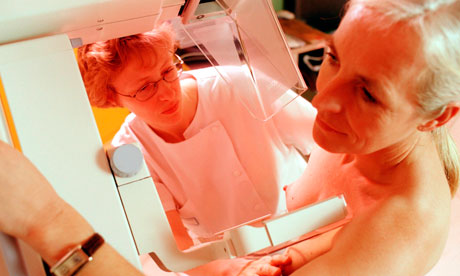VA increases breast screenings after initiative
The U.S. health system that cares for the nation’s veterans increased services to screen for and treat breast cancer over the past five years, but at one hospital the time it took women with the disease to be treated also increased, says a new study.
Researchers from the Baltimore Veteran Affairs (VA) Medical Center found the facility performed many more mammograms after 2007, when breast cancer screening and treatment was made a top priority for the agency. However, it took women - on average - an extra 18 days to get treatment once they were diagnosed.
“The population of female veterans is increasing rapidly and the VA has prioritized implementation of screening services - especially for breast cancer… and has been very successful in doing so,” Dr. Ajay Jain, the study’s lead author, said.
Between 2003 and 2009, the number of women using outpatient services at VA medical centers increased by 47 percent, Jain and his colleagues wrote in JAMA Surgery.
During that time, the VA prioritized mammogram screenings and breast cancer services to accommodate the growing number of female veterans turning to it for healthcare.
The researchers’ goal was to see whether increasing the number of women receiving those services affected the average lengths of time between being screened for cancer and getting a positive diagnosis, and between diagnosis and treatment.
 Between 2000 and 2012, the Baltimore VA Medical Center performed 7,355 mammograms. Over 90 percent of those were done after the breast cancer initiative was put in place in 2007.
Between 2000 and 2012, the Baltimore VA Medical Center performed 7,355 mammograms. Over 90 percent of those were done after the breast cancer initiative was put in place in 2007.
The average time between an irregular mammogram and a diagnosis of breast cancer held steady during the study period, at 34 days.
Before the initiative, however, the average length of time between diagnosis and treatment of breast cancer - typically surgery - was about 33 days. After the initiative, that increased to 51 days.
The researchers wrote that the difference may be due to more VA patients needing a second mammogram or undergoing diagnostic tests at non-VA hospitals. The delays could also reflect higher numbers of women being screened overall, including those referred to the Baltimore VA from rural medical centers, they added.
They also said that although no clear guidelines exist, the increased time to treatment still falls below a 90-day threshold, after which treatment delays have been associated with cancer progression and worse outcomes.
To try to decrease the length of time between diagnosis of breast cancer and treatment, Jain told Reuters Health the Baltimore VA Medical Center is acquiring more resources to care for women so they don’t have to go to another non-VA center.
“The take home message in my opinion is the recognition of the fact that a significant demographic shift is occurring in the military,” Jain said. “As these females return from Afghanistan and Iraq from deployment, we’re seeing an increase in enrollment.”
 He added that it’s also important for female veterans to know these resources are available at the VA.
He added that it’s also important for female veterans to know these resources are available at the VA.
“I think that women should realize the VA is doing this and the VA has prioritized this,” he said.
SOURCE: JAMA Surgery, online September 18, 2013.